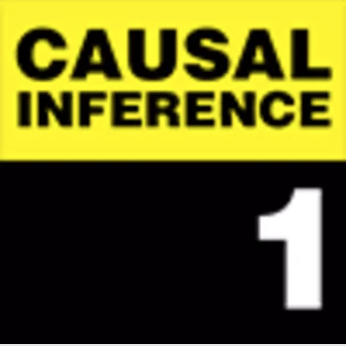Coursera
Coursera for University Students Coronavirus Response:
Columbia University undergraduate and graduate students can enroll in over 3,800 courses, guided projects, specializations, and professional certificates on Coursera for free through September 30, 2020. For any course you enroll in on or before September 30, 2020, you will continue to have free access for at least two months from the date of enrollment to complete them.
Coursera was founded in 2012 by two Stanford Computer Science professors who wanted to share their knowledge and skills with the world. Professor Daphne Koller and Andrew Ng put their courses online for anyone to take – and taught more learners in a few months than they could have in an entire lifetime in the classroom. Since then, they’ve built a platform where anyone, anywhere can learn and earn credentials from the world’s top universities and education.
Below are several courses on Coursera that are taught by instructors at Columbia University. The courses include recorded video lectures, auto graded and peer-reviewed assignments, and community discussion forums. When participants complete a course, they receive a sharable electronic Course Certificate.
We also provide a specialization in Construction Management. In this course, participants complete a series of rigorous courses, tackle hands-on projects and earn a Specialization Certificate to share with their professional network and potential employers.
Specializations on Coursera
Construction Project Management and Planning
Construction Management is the planning, coordinating, and building of a project from conception to completion. This is a four-part specialization, intended for construction industry professionals, engineers, and architects looking to advance their careers. Students interested in learning about construction project management would also benefit from this specialization. Real-world projects will be included in each course of the specialization to enforce the skills being taught.
Construction Project Management
Social Policy for Social Services & Health Practitioners
In the U.S., social policy accounts for two-thirds of government spending. Knowing how policies are constructed, what values underlie them, and how they succeed or fail makes everyone more effective at work or in their civic role. This specialization includes an HONORS track in which learners will complete a professional social policy analysis.
Teachers, health care workers, police, and social workers interact with policy daily, but all of us should care about the impact and effectiveness of these programs. Health and mental health programs, education, housing and income supports, pensions, criminal justice services, veterans’ programs, child protective services, and immigration services create a support system all Americans will draw upon. They also reveal Americans’ ethics and values, indicating how we regard and care for our most vulnerable.
What Is the Welfare State? A Cross-National Comparison
The Welfare State: Where Did It Come From?
Poverty & Population: How Demographics Shape Policy
Income Transfer Policies for Families, People with Disabilities, and the Aging Population
Courses on Coursera
The Age of Sustainable Development
This course gives students an understanding of the key challenges and pathways to sustainable development – that is, economic development that is also socially inclusive and environmentally sustainable.
Causal Inference
This course offers a rigorous mathematical survey of causal inference at the Master’s level; it provides an introduction to the statistical literature on causal inference that has emerged in the last 35-40 years and that has revolutionized the way in which statisticians and applied researchers in many disciplines use data to make inferences about causal relationships.
Construction Cost Estimating and Cost Control
This course introduces the types of cost estimation from the conceptual design phase through the more detailed design phase of a construction project. In addition, the course highlights the importance of controlling costs and how to monitor project cash flow.
Construction Finance
This course helps the learners expand their knowledge of a construction project manager to include an understanding of economics and the mathematics of money, an essential component of every construction project. It is the final course of the specialization mentioned above.
Construction Project Management
This course is an introduction to concepts of Project Initiation and Planning. Technological advances, such as Building Information Modeling, are also introduced with real world examples of the uses of BIM during the Lifecycle of the Project.
Construction Scheduling
Learn key project scheduling techniques and procedures. Fundamentals of Bar Charts, Precedence Diagrams, Activity on Arrow, PERT, Range Estimating, and linear project operations and the line of balance are also covered in this course.
Economics of Money and Banking Part 1
This course, part one of a two-part series, is an introduction to a “money view” of economic activity for modern times, building on the intellectual traditions of British central banking and American institutionalism. Part One explores the economics of payment systems and money markets.
Economics of Money and Banking Part 2
This course, part two of a two-part series, explores connections with foreign exchange and capital markets. It is an introduction to a “money view” of economic activity for modern times, building on the intellectual traditions of British central banking and American institutionalism.
Financial Engineering and Risk Management Part 1
This course, part one of a two-part series, provides an introduction to various classes of derivative securities and how to price them using “risk-neutral pricing.” The follow-up to this course (FE & RM Part II) considers portfolio optimization, risk management and more advanced examples of derivatives pricing.
Financial Engineering and Risk Management Part 2
Part two of this course follows on from FE & RM Part I. It considers portfolio optimization, risk management and some advanced examples of derivatives pricing that draw from structured credit, real options and energy derivatives. It also casts a critical eye on how financial models are used in practice.
Health, Housing, and Educational Services
This course discusses policies in four areas: housing, education, healthcare, and immigration, with an optional fifth module in child protection. This course addresses issues of power, oppression, and white supremacy.
HI-FIVE: Health Informatics For Innovation, Value & Enrichment (Administrative/IT Perspective)
This course is from an administrative or IT perspective in healthcare, health IT, public health, and population health. It is geared towards executives, managers, analysts, and staff that work in administration, business, finance, operations, data or IT.
HI-FIVE: Health Informatics For Innovation, Value & Enrichment (Clinical Perspective)
This course is from a clinical perspective in healthcare, health IT, public health, and population health. It is geared towards physicians, nurse practitioners, physician assistants, nurses, clinical executives and managers, medical assistants, and other clinical support roles.
HI-FIVE: Health Informatics For Innovation, Value & Enrichment (Social/Peer Perspective)
This course is from a social or peer perspective in healthcare, health IT, public health, and population health. It is geared towards care coordinators, care/case managers, social workers, community health workers, patient navigators, peer coaches, behavioral health support, and other similar roles.
Income Transfer Policies for Families, People with Disabilities, and the Aging Population
This course discusses four populations: families, poor families, people with disabilities, and people as they age. This course addresses issues of power, oppression, and white supremacy.
MOS Transistors
Learn how MOS transistors (MOSFET) work, and how to model them. The MOS transistor is the workhorse of the microelectronic revolution. The understanding provided in this course is essential not only for device modelers, but also for designers of high-performance circuits.
Poverty & Population: How Demographics Shape Policy
This course has four modules, or foci. The first is to understand the categories of social welfare—populations, income, earnings, and assets— and some related concepts that play a very large role in shaping policy decisions: unemployment, inflation, and the minimum wage. The second deals with the central institution of social welfare—the labor market, which largely determines how many resources a person has.
The Welfare State: Where Did It Come From?
The course probes the formation of social policy in the United States from its very first cultural and religious roots. Starting with the transition from hunter-gatherer groups to agrarian villages, the course will examine the passage of the Poor Laws that shaped social policy through the colonial period until the beginnings of the 20th century, when the challenge of making the industrial city livable gave rise to the development of the welfare state.
What Is the Welfare State? A Cross-National Comparison
Course 1 will explore the size, structure, and outcomes of U.S. social policy and compare this policy to those of similar developed countries. The course will also probe the values this policy represents and the values debate regarding about how big our welfare state should be— in other words, how much of our education, housing, health, income support, and social services the government should supply and how much individuals should supply for themselves.














